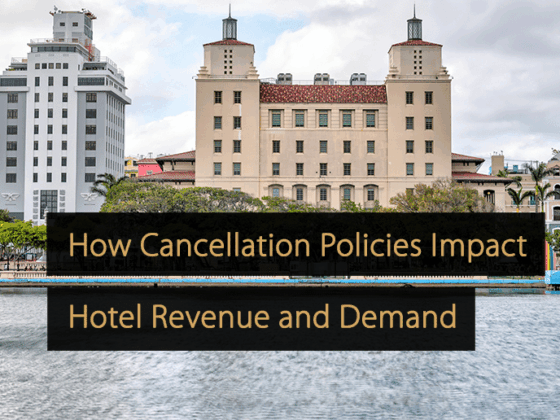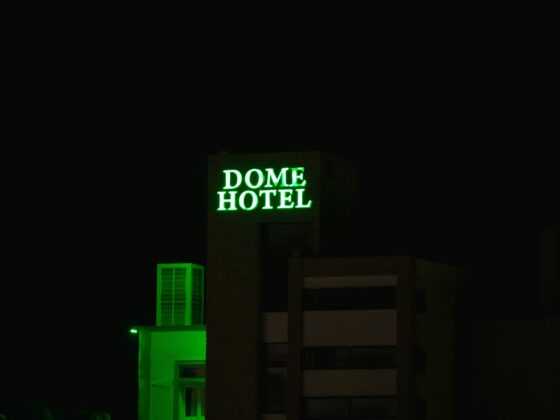
Hotels love a good win. Marketing celebrates record clicks, sales land big contracts, and revenue holds rates during slow seasons. Yet these surface victories don’t always equal profit. They can hide weak margins and rising costs. True growth demands a shift in mindset. Instead of chasing numbers that look impressive but fail to strengthen the bottom line, hotels need a strategy that unites every department around profitability. Revenue marketing provides that framework, aligning sales, marketing, and revenue teams to drive smarter decisions.
In this article, you’ll learn how to adopt revenue marketing for lasting growth.
What Is Revenue Marketing?
Revenue marketing is the unification of sales, marketing, and revenue management around the shared mission of increasing total profitability.
It is a fundamental shift in how hotels measure success and make decisions.
Historically, each department focused on its own goals and KPIs, thereby forgoing the collaboration necessary to drive bottom-line growth. A Cornell University survey of 400 revenue professionals found that half were embedded in sales and marketing, while a third operated in standalone departments. The siloed model has long limited profitability, even as revenue leaders themselves call for a more cross-functional role.
In the revenue marketing model:
- Every decision is evaluated by its impact on net profit
- Campaigns, pricing, and sales strategies are built from the same data
- Teams operate as a single commercial team, not separate departments
This shift has been a long time coming and is finally possible thanks to the data quality and integration we’re now seeing across systems.
How Revenue Marketing Transforms Hotel Performance
A flash sale might deliver an impressive return on ad spend, but if the discount was more than necessary, margins take a hit. Sales might bring in a large group, but at a discounted rate with minimal food and beverage spend, the property loses money.
Even occupancy can be misleading. A full hotel means nothing if you’ve given away too much in commissions to OTAs or discounted nights that would’ve sold anyway.
Departmental leaders must reframe what success looks like, moving away from vanity metrics and chasing what really matters: profitability.
That’s where the concept of revenue marketing comes in. Aligning commercial decisions and teams towards the goal of total profitability can help fuel sustainable growth for hotels.
Factors Enabling this Shift
Hotels can’t afford to operate the way they once did. Several factors are accelerating this shift towards revenue marketing:
1. Rising Costs
Labor, utilities, and commissions continue to climb. While topline revenue may look strong, rising costs can quickly impact a hotel’s profitability.
2. Guest Expectations
Personalization and convenience are everywhere for guests these days and require hotels to move away from generic email blasts and marketing campaigns to drive results. Conversely, guests are also increasingly used to dynamic pricing. Thanks to Uber and airlines, consumers understand that prices change with demand. This creates an opportunity for hotels to adjust their pricing without eroding travelers’ trust.
3. Data Accessibility
Integrated PMS, RMS, and CRM systems combined with AI-driven forecasting give hotels real-time insights into demand and guest behavior. Even better, they can measure the impact of campaigns and strategies on profit, not just clicks or room nights, making it possible to run coordinated campaigns and track results in one place.
The New Rules of Revenue Marketing
To transition to a revenue marketing mindset, hotels must:
1. Focus on the Right Metrics
Opens, clicks, and even occupancy rates can be deceptive. A campaign that drives high engagement or fills rooms quickly isn’t a win if it cuts into margins. Instead, focus on net revenue, contribution margin, channel efficiency, and guest lifetime value as your true measures of success.
2. Plan Campaigns Based on Demand Forecasts
Forget calendar-driven promotions like Black Friday or end-of-summer discounts. Marketing activity should follow demand signals from your RMS and PMS. For example, if forecasts reveal a gap two weeks out, launch a targeted campaign to fill those dates without discounting weekends or nights that would have sold out anyway.
3. Segment Smarter
Basic segments like “business vs. leisure” don’t tell the full story. Profitability-first segmentation looks at acquisition cost, length of stay, and repeat behavior. High-value focus areas include repeat guests (low cost to acquire), OTA converters (high potential for direct), and long stays (higher RevPAR with fewer operational costs).
4. Focus on Channel Profitability
Not all bookings are created equal. A full hotel with 60% OTA bookings can be less profitable than one with lower occupancy and more direct business. Revenue marketing weighs acquisition costs and contribution margins across every channel to maximize profitability, not just volume.
5. Embrace AI for Real-time Optimization
Demand shifts happen quickly, and waiting days doesn’t work anymore. Causal AI tools help hotels understand why demand is changing and recommend the most profitable marketing action in real time.
A benchmarking study showed that RMS price recommendations are overridden 39% of the time, underscoring the resistance many hotels still have toward trusting automation. Hotels must embrace this technology, with some systems reaching up to 95% accuracy. The evidence is clear that data-driven tools outperform manual reactions.
What Profitability-First Looks Like in Practice
Principles are powerful, but hoteliers need to see how they work in the real world. Here are a few examples of how profitability-first revenue marketing comes to life:
Flash Sale vs. Forecast-Based Campaign
A flash sale might deliver a spike in bookings, but it often discounts nights that would’ve sold at full rate. Using revenue marketing principles, promotions follow demand signals. If your forecast shows soft occupancy midweek, marketing can launch a targeted campaign to local leisure travelers, filling gaps without slashing rates.
OTA Converter Campaigns
Guests who frequently book your property through OTAs are a hidden opportunity. By identifying these segments in your CRM, you can target them with personalized direct-booking perks like flexible check-in or a complimentary upgrade. This shifts business away from high-commission channels while strengthening loyalty.
Long-Stay Packages
Instead of blanket discounts, use segmentation data to design tailored offers for high-value guests. For example, remote workers booking 10+ night stays during shoulder season can be incentivized with weekly housekeeping and co-working perks. The result: higher RevPAR, lower acquisition costs, and reduced operational turnover.
Local Demand Capture
When local events pop up like a food festival, sporting event, or conference, teams can act fast. Revenue sets strategic rate floors, while marketing runs targeted campaigns highlighting value-adds like early check-in or free shuttles. By aligning around profitability, the hotel keeps demand in-house instead of letting OTAs capture it.
Building a Commercial Culture
Making profitability your north star requires more than new metrics. It requires a new mindset adopted across your sales, marketing, and revenue management teams.
1. Appoint a Commercial Leader
Revenue marketing strategies start with leadership. A dedicated commercial leader ensures sales, marketing, and revenue management work from one playbook. This avoids the common scenario where sales undercut rates to hit targets or marketing discounts too heavily without revenue buy-in.
2. Train Teams to Speak the Same Language
Revenue managers should understand customer acquisition costs. Marketers should be able to interpret RevPAR reports. Sales teams should know the lifetime value of different guest segments. Cross-training helps each department see the bigger picture and align on profitability instead of individual wins. Right now, many revenue professionals aren’t even in the room: an HSMAI survey revealed they spend less than half their time on revenue-generating activities, and only 2–3% of their time collaborating with sales and marketing.
3. Adopt Unified Dashboards
You can’t align teams without aligning data. A single dashboard that combines PMS, RMS, and CRM insights ensures everyone is working from the same source of truth. When teams can clearly see how their actions affect one another and contribute to the bottom line, they’re far more inclined to work together.
4. Foster a Test-and-Learn Mindset
Profitability-first doesn’t mean sticking to rigid rules. It means experimenting with strategies, then doubling down on what drives the most sustainable growth. Test new packages, segments, channel mixes, or campaign triggers, and measure their impact on net profit.
Putting Profit at the Forefront
Revenue marketing offers a new path away from metrics that look good on paper but don’t really move the needle. By unifying sales, marketing, and revenue management around shared goals, hotels can move past vanity metrics and start building strategies that truly grow their business.
The key to making this shift work is technology. With today’s integrated platforms and advanced AI, commercial teams can understand the why behind every booking and act on it in real time. That means not just adjusting rates, but triggering the right promotions for ultimate profitability.
Free Report: The PMS UX Report – User-Friendly Design Drives Success
The PMS User Experience Report explores how user-friendly property management systems impact hotel staff efficiency, training, and retention. Based on a survey of 500 employees, it highlights key challenges and the role of intuitive design in improving hospitality operations.
Click here to download the report “The PMS User Experience Report – How User-friendly UX Drives Success”.
Apply revenue marketing principles to align teams, focus on profit, and create lasting growth. Use the insights shared to refine strategies, embrace data-driven decisions, and start building a hotel business that thrives on sustainable profitability and stronger guest value.
More Tips to Grow Your Business
Revfine.com is the leading knowledge platform for the hospitality and travel industry. Professionals use our insights, strategies, and actionable tips to get inspired, optimize revenue, innovate processes, and improve customer experience.
Explore expert advice on management, marketing, revenue management, operations, software, and technology in our dedicated Hotel, Hospitality, and Travel & Tourism categories.







